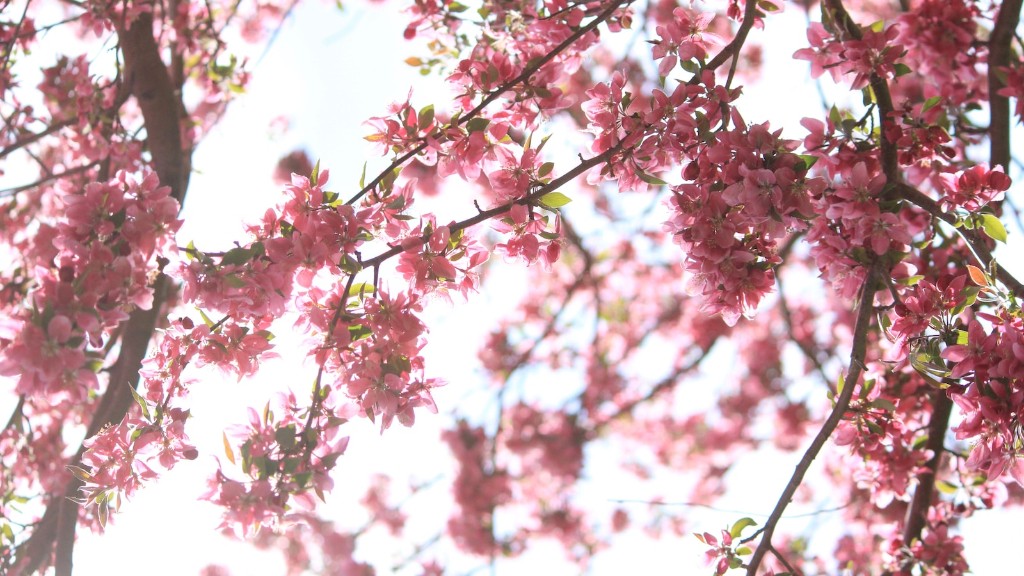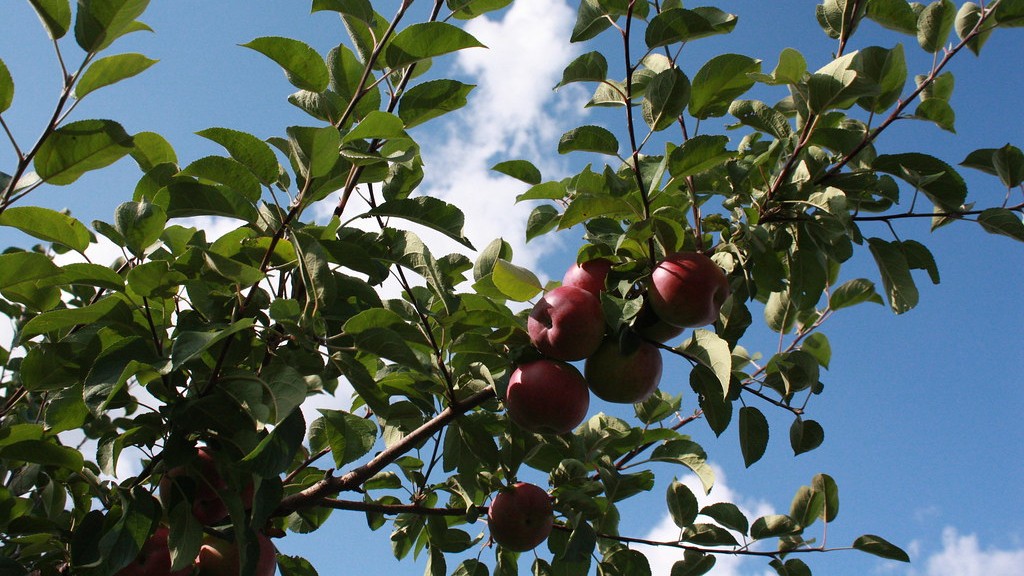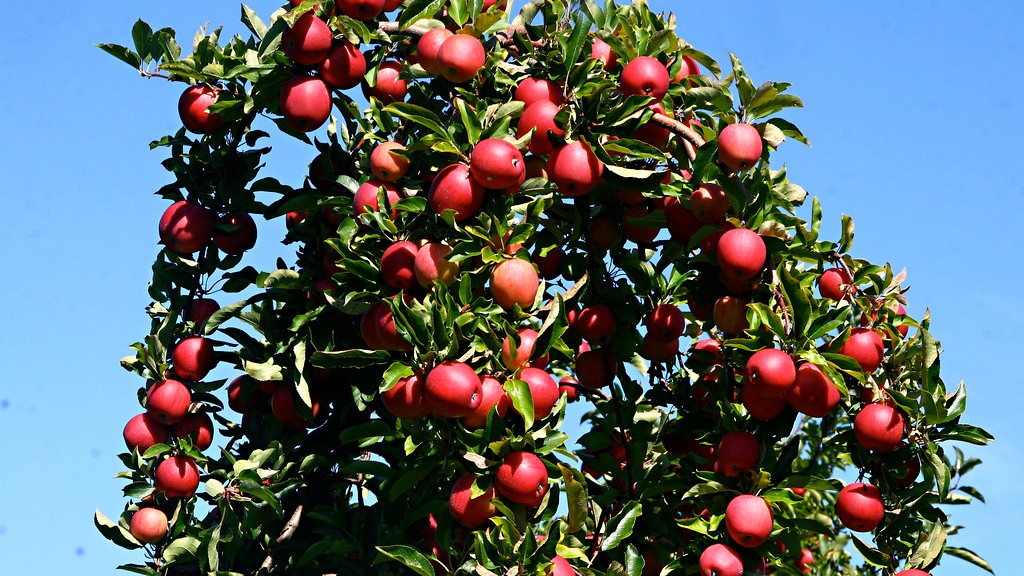Overview Of Growing A Cherry Tree from Seed/Pit
Growing a cherry tree from seed or pit is a rewarding and educational experience. The results can be both delicious and aesthetically pleasing. With some patience, anyone can grow and maintain their own cherry tree at home.
The first step is to prepare the seed or pit for planting. Before planting, the cherry pit or seed should be soaked for 24 hours to encourage it to sprout more quickly. After soaking, the seed should be planted outdoors in the spring, around two to three weeks before the last frost. For best results, it should be planted in nutrient-rich, well-draining soil.
When planting, cherry pits should be placed in loose soil, 1 to 2 inches deep in the soil. If you are planting several seeds/pits, they should be spaced about 6 inches apart to give each seedling space to grow. Once the seedling has sprouted, it should be thinned to one per pot or planting area.
Cherry trees require plenty of sunlight to thrive. It is best to choose an area that receives at least six hours of direct sunshine each day. Trees should be kept well-watered and mulched to keep roots cool and moist. The amount of water needed may vary depending on the climate and other factors.
Fertilizing the tree is also important. It is best to use a balanced, slow-release fertilizer in the spring and again in the autumn. This will provide the tree with essential nutrients throughout the growing season.
To encourage a healthy and bountiful harvest, cherry trees should be pruned each year. Pruning helps to promote strong growth and encourages the tree to bear fruit. Pruning can be done by hand, but it is best to use pruning shears for heavier branches.
Finally, cherry trees need to be protected from pests and diseases. Check the tree regularly for signs of insect damage, fungal diseases, or any other anomalies. If necessary, apply insecticides and other treatments as recommended by your local garden center.
Additional Care and Maintenance
Cherry trees require additional care and attention to ensure a healthy, productive harvest. Trees should be regularly monitored for signs of pests, diseases, or nutrient deficiencies. Trees should also be well-pruned and supported with stakes or other structures if necessary. It is also recommended to prune off dead or broken branches to ensure optimal growth.
In addition, cherry trees should be well-watered and fertilized. Water during dry spells and avoid overwatering. A balanced fertilizer can provide the tree with important nutrients and help promote strong growth. Fertilizer should be applied at least twice a year, in both the spring and fall.
Growing a cherry tree can be a rewarding and educational experience. Once the tree is established, it will produce delicious fruit for many years. With a little patience and care, anyone can have their own cherry tree and enjoy the fruits of their labor.
Disease and Insect Prevention
It is important to keep a close eye on cherry trees for any signs of disease or infestations. Several types of bacterial and fungal diseases can affect cherry trees, as well as a variety of insects. To protect cherry trees from disease and pests, it is best to use preventive measures.
Regular monitoring of the tree can help prevent disease and pest infestations before they become a problem. Removing dead or damaged branches can also be beneficial, as this will reduce the likelihood of disease and insect infestations. In addition, using an all-purpose insecticide can provide additional protection.
It is also important to ensure cherry trees receive the necessary nutrients. Maintaining a balanced fertilizer schedule can help the tree to stay healthy and productive. If a nutrient deficiency is suspected, it is best to have a soil sample tested in order to determine the best course of action.
Harvesting and Storing
When harvesting cherries, it is important to pick the fruit when it has reached peak ripeness. Cherries should be firm and have fully developed color, but they should not be mushy or overripe. Once the cherries are picked, they can be stored in the refrigerator for up to two weeks.
For longer storage, cherries can be frozen. To freeze cherries, place them in an airtight container and place them in the freezer for up to one year. Frozen cherries can also be used in recipes and jams.
Cherry trees can provide years of delicious fruit, but they require some effort to maintain. With the right care and attention, anyone can have a successful cherry tree and enjoy a bountiful harvest.
Pest Control
When it comes to cherry tree care, pest control is essential. Several common pests, such as aphids and caterpillars, can cause damage to cherry tree leaves and fruit. To protect trees from pests and disease, it is important to regularly inspect them for signs of damage or infection.
If any pests are found, it is best to use a safe and effective insecticide, as well as other preventative measures such as increased sanitation and removal of dead or diseased branches. It is also important to keep an eye out for signs of disease such as wilting leaves or discolored fruit.
For best results, contact a local garden center or agricultural extension office for advice on controlling pests and diseases. They will be able to recommend the best course of action for your cherry tree.
Conclusion
Growing a cherry tree from seed or pit can be a rewarding and educational experience. With proper care and attention, anyone can have a successful cherry tree and enjoy a bountiful harvest. It is important to provide the tree with an adequate amount of sunlight, water, and fertilizer. Additionally, preventative measures such as regular pruning, pest control, and monitoring for disease should be taken. Regular monitoring and preventative measures are key to ensuring a healthy and productive harvest.




